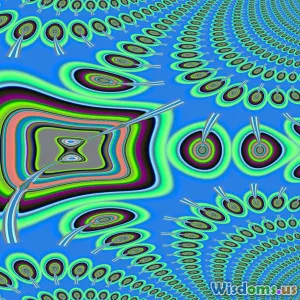
Comparing Ancient Versus Modern Theories on Dream Fueled Creativity
9 min read Explore how ancient beliefs and modern science reveal dream-fueled creativity’s role in innovation across history and today. (0 Reviews)
Comparing Ancient Versus Modern Theories on Dream-Fueled Creativity
Dreams have long fascinated humanity, especially when it comes to unleashing creativity. From mystics who saw them as divine messages to modern scientists decoding the brain’s nocturnal activity, dreams have been a rich source of inspiration. This article dives into how ancient and modern theories conceptualize dreams' capacity to fuel creativity, why these views have evolved, and what we can learn from them today.
Introduction: The Enduring Mystique of Dream Creativity
Throughout history, many revolutionary ideas and artistic masterpieces have roots in dreams. Consider Paul McCartney waking up with the melody of "Yesterday" in his mind or Elias Howe struggling with the sewing machine design before a dream unveiled the solution. Yet, how cultures and scholars understood this phenomenon shifted dramatically: ancient theories often framed dreams as messages from gods, while contemporary science studies neural mechanisms and psychological faculties.
Understanding tribal, religious, and classical interpretations alongside today's neurological and cognitive perspectives enriches our appreciation of dreams’ creative potential.
Ancient Theories on Dream-Fueled Creativity
Divinatory and Mystical Interpretations
In ancient civilizations, dreams were viewed primarily as communication channels between humans and the divine. Cultures like the Egyptians, Mesopotamians, and Greeks believed their dreams were prophetic or instructive:
- Ancient Egypt: Dreams were considered journeys into the spiritual realm. The "Ramesside Dream Book," an early dream manual, outlined interpretations believed to predict the future or reveal hidden knowledge.
- Greece and Rome: Philosophers like Aristotle and later Pliny the Elder documented beliefs that dreams could foretell future events or grant divine insights, enabling creative discoveries or innovations.
- Biblical references: Joseph's dreams interpreting Pharaoh’s visions show ancient dreams directly affecting leadership decisions, suggesting dreams’ pivotal influence.
These civilizations often practiced dream incubation — rituals performed to invite clarity or creative inspiration from the dream world.
Philosophical Views on Dreams as Creative Insight
Aristotle questioned the prophetic aspect but agreed dreams reflected waking life activity, thereby indirectly stimulating creativity by bringing day-experiences into unusual combinations during sleep.
Romans like Cicero emphasized dreams’ practical importance, portraying them as guiding problem-solving tools. This early philosophical framing hinted at the subconscious process, albeit without modern scientific terminology.
Symbolism and Archetypes
Carl Jung later emphasized that ancient societies approached dreams as sources of rich symbolic material. Archetypes like the “wise old man” or the “trickster” appeared in myths and dreams alike, suggesting that early cultures viewed dreams as windows into collective creativity stored in the human psyche.
Transition to Modern Scientific Theories
As the Scientific Revolution took hold, dream interpretations initially shifted toward skepticism, favoring empirical methods over mysticism. Yet, interest in dreams' relationship with creativity never waned; rather, it evolved into focused neuroscientific and psychological investigations.
Freud and the Birth of Psychoanalysis
Sigmund Freud’s groundbreaking work, "The Interpretation of Dreams" (1899), posited dreams as expressions of unconscious desires, often symbolic in nature. Though Freud primarily explored emotional conflicts, his model underscored that underlying mental processes during dreams could stimulate novel associations—an essential component of creativity.
Carl Jung and the Collective Unconscious
Building on Freud, Jung saw dreams as communicating collective symbolism, opening paths to deep creative insight and individuation. His approach encouraged artists and writers to mine dreams for symbolic imagery to foster imaginative work.
Both Freud and Jung reintroduced the respectful seriousness of dreams as internal creative forces, influencing 20th-century art and psychology.
Modern Neuroscientific and Psychological Theories
The Brain’s Restorative Creativity Engine
Modern neuroscience frames dreaming, particularly REM sleep, as a crucial brain activity phase where emotions are processed, memory integration occurs, and novel connections form:
- Studies show increased activity in the limbic system (emotion) and decreased activity in the prefrontal cortex (logical reasoning) during REM sleep, fostering free association—a neural basis for out-of-the-box thinking.
- Research using fMRI indicates that the brain blends recent experiences and distant memories in ways not possible during waking consciousness, enabling creative leaps.
Dreams’ Role in Problem Solving and Innovation
Empirical studies confirm dreams aid problem-solving:
- The famous chemist August Kekulé discovered the ring structure of benzene after dreaming of a snake biting its tail, illustrating the power of visual metaphor appearing through dreams.
- Experiments show participants who sleep after learning tasks often perform better due to unconscious processing.
These findings highlight that dream states help creative cognition by bypassing traditional constraints of conscious thought.
Cognitive Theories and Incubation
Psychologists outline the incubation effect—how stepping away from a problem (often during sleep) allows the subconscious mind to work toward solutions. Dream content reflects this integrative process, often unconsciously stimulating creative insights when revisited upon waking.
Technologies like lucid dreaming trainings are now emerging, helping creators harness dream content deliberately to boost innovation.
Comparing Lessons from Ancient and Modern Perspectives
While ancient theories imbue dreams with supernatural import, and modern views rely on observable brain patterns, both share core themes:
- Dreams as a Bridge: Both see dreams as mediators between different realms—be they divine and earthly or conscious and subconscious.
- Creative Inspiration Source: Mythical or symbolic visions in ancient times and neurological insights today both acknowledge dreams' role in producing new, meaningful connections.
- Applied Practices: Rituals like dream incubation echo modern techniques like journaling dreams or meditation to enhance creative awakening.
Together, these lenses demonstrate that creativity fueled by dreams is a timeless human endeavor, blending mystery with scientific exploration.
Conclusion: Embracing Dreams to Spark Creativity Today
Understanding ancient reverence alongside modern scientific insights encourages a holistic appreciation of dreaming’s creative power. Whether you trust a dream as a divine message or view it as your brain’s nocturnal brainstorming session, tapping into dreams can be transformative.
For artists, innovators, and thinkers, respecting dreams—through journaling, incubation techniques, or lucid dreaming—opens a portal to creativity that transcends the waking mind.
As science progresses and cultural curiosity remains, the relationship between dreams and creativity continues to inspire remarkable breakthroughs, reminding us that sometimes the most creative ideas come when we’re asleep.
References:
- Nielsen, T.A., & Stenstrom, P. (2005). What makes a dream creative? Towards a neurocognitive framework for the study of dream creativity. Consciousness and Cognition.
- Freud, S. (1899). The Interpretation of Dreams.
- Jung, C.G. (1964). Man and His Symbols.
- Barrett, D. (2001). The Committee of Sleep: How Artists, Scientists, and Athletes Use Dreams for Creative Problem Solving. Oneiroi Press.
- Walker, M. (2017). Why We Sleep: Unlocking the Power of Sleep and Dreams. Scribner.
Rate the Post
User Reviews
Popular Posts



















